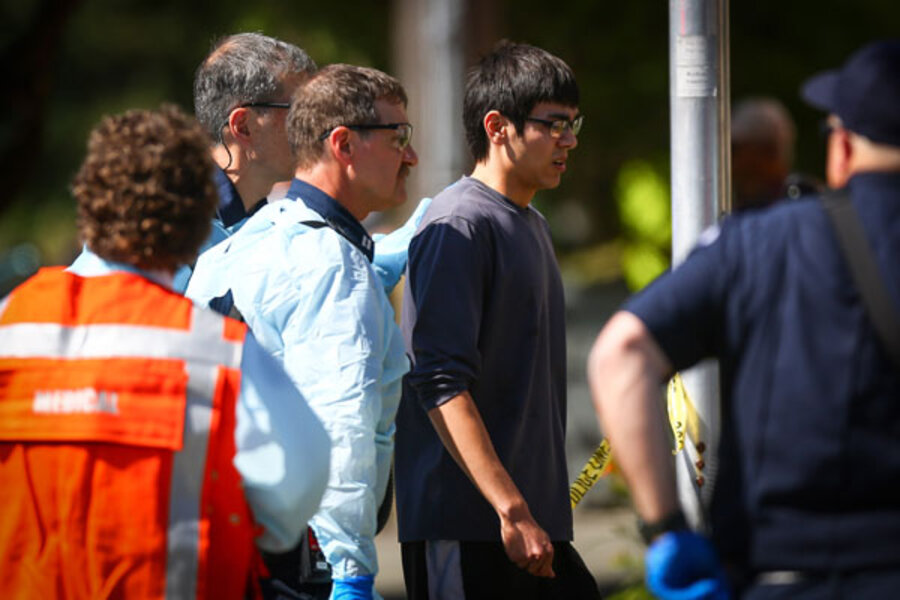Seattle campus shooting: How often do bystanders stop mass killings?
Loading...
Gifts are pouring in for Jon Meis, the engineering student being credited with stopping a mass shooting at Seattle Pacific University Thursday.
Police have taken Aaron Ybarra, a 20-something with a history of mental illness, into custody in connection with the shooting rampage, which left one man dead. The shooter entered the university with a shotgun, and when he paused to reload, Mr. Meis pepper-sprayed him and subdued him. Mr. Ybarra was not a student at the school and no motive is yet known, though Mr. Ybarra's lawyer said he suffers from delusions.
Meis's roommate, Matt Garcia, tweeted:
Others agree. Meis is set to get married on June 21, and after a link to his wedding registry was posted on the social media site Reddit, everything on his wedding registry was purchased. Others who wanted to pay for Meis's honeymoon have donated $37,000, according to The Atlanta Journal Constitution.
Meis's act of heroism stands out for how he stopped the shooter. The gun lobby has argued that armed and responsible citizens are an important way to stop mass shooters; they can act in the crucial moments before police arrive. "The only thing that stops a bad guy with a gun is a good guy with a gun," said National Rifle Association Executive Vice President Wayne LaPierre after the shootings in Newtown, Conn., in 2012.
As a result, the national conversation has often focused on how often gun owners stop mass shootings. The data are hotly debated.
For example, after Newtown, the website BuzzFeed published a list of nine mass shootings that members of the gun lobby say were stopped by bystanders with guns. The liberal-leaning website Mother Jones promptly tried to poke holes in some of those stories, suggesting that the incidents were not as cut-and-dried as they appeared.
FBI data offer a neutral, though not comprehensive, look. An FBI report released in January tracked 104 mass-shooting events from 2000 to 2012. In 16 percent of the cases, the suspect was either subdued (14) or shot (3) by victims before law enforcement arrived. The study does not offer details about how the victims subdued the attacker.
Fighting with a shooter is the last thing you should do if caught in a mass killing, says the Department of Homeland Security in an online video. But sometimes it is necessary.
- The first and best option is to flee, if possible, the video says.
- The second option is to hide. The video suggests getting behind a locked or blocked door and says you should turn off the lights and your cellphone.
- The third option is to fight, though the video counsels: "As a last resort, if your life is at risk, whether you are alone or working together as a group, fight."
In a demonstration on the video, people use a fire extinguisher, a belt, and a chair to fight an attacker. "Act with aggression. Improvise weapons. Disarm him. Commit to taking the shooter down no matter what," the video says.
At the time of the shooting, Meis was acting as a monitor, sitting at a desk in the lobby. Acquaintances say he always carried pepper spray just to be prepared. A family friend, Andrew Van Ness, told CNN Meis is "amazingly resourceful."
He added: "I wasn't surprised to see he was the hero – his resourcefulness, love for others and knowledge of the greater good are what defines him, in my mind."
Associated Press material was used in this report.








